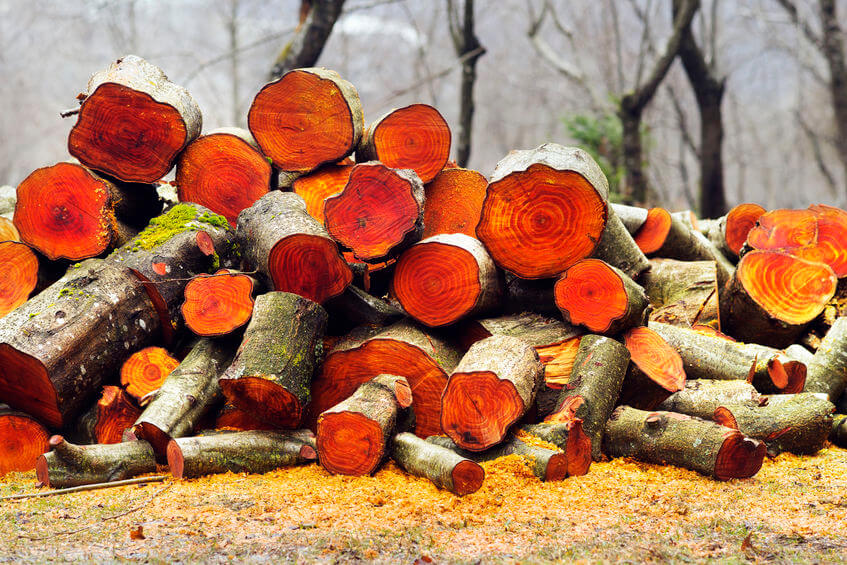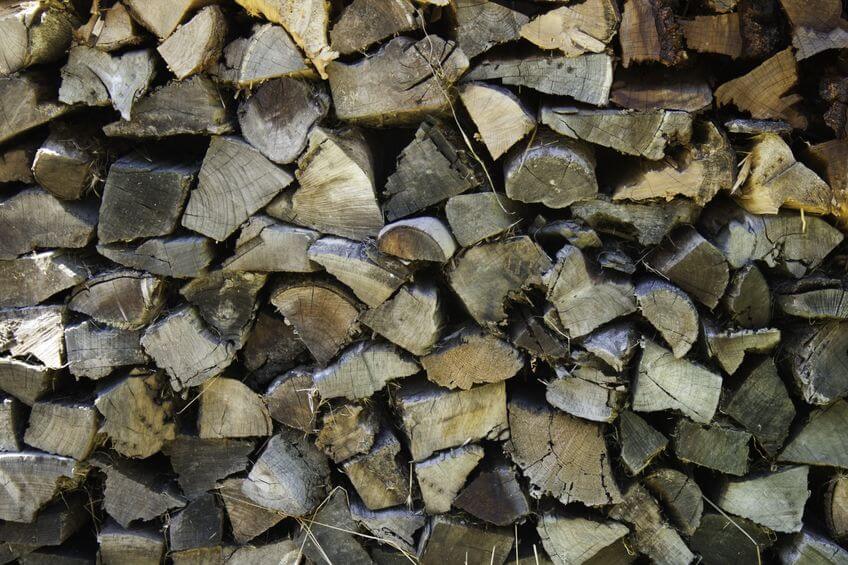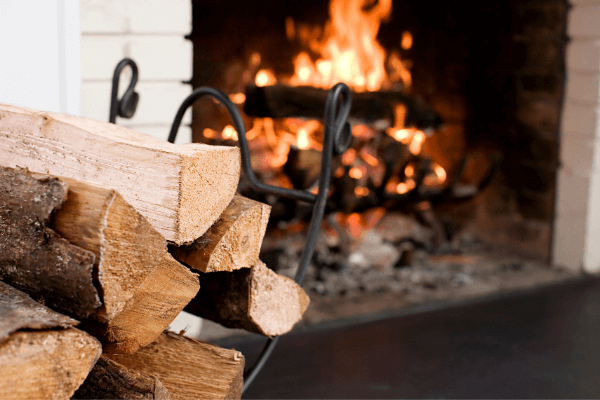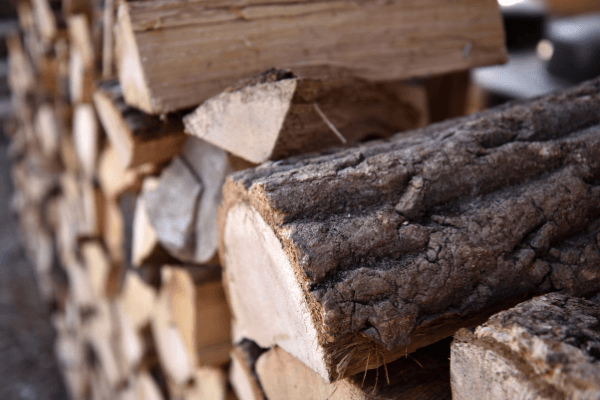- Home
- Buying firewood
- Green Firewood
Green Firewood
This post may contain affiliate links so I earn a commission.
Green firewood is any wood that has a high moisture content and is not seasoned.
The tree species does not determine whether or not the wood is green, it's the moisture content which is affected by how long the tree has been cut up, split and dried.
If you have ever used green firewood you know it can be very frustrating.
The moisture in the wood makes it hard to light and hard to burn.
Green wood will sizzle, pop, smolder and smoke.
It's nearly impossible to create a hot fire with the wet wood because it never really takes off or gets going.
 Freshly Cut Alder Logs
Freshly Cut Alder LogsAll of the energy and heat produced by the fire is used to evaporate the water from the wood.
This is what creates the sizzling sound you hear when the wood is in the fire.
Besides being frustrating to burn, green wood can be more dangerous to use than firewood that's been properly seasoned.
Green wood can cause creosote to build up on the inside of your chimney leading to a potential chimney fire.
Creosote is a flammable substance left behind from using unseasoned firewood.
As unburnt gasses from a cool fire go up the chimney they adhere to the chimney wall.
Using well seasoned wood creates a hot fire, reducing creosote buildup.
How To Identify Green Firewood
Green wood will generally look fresh.
The bark will still be firmly attached to the wood and it will feel heavy.
The ends of the wood where it has been cut may feel damp and it will have a light color.
Seasoned firewood will feel lighter.
The outside of the wood will be dark and grey and the ends of the logs will be cracked.
The bark will be flaking off or missing all together.
When you burn firewood, this old grey wood is what you want to look for.
Seasoned firewood will be easier to light, burn hotter and last longer than green wood.
 Seasoned Firewood
Seasoned FirewoodTo season green wood it should be split and stacked in a dry place where it can properly dry.
This may take around one year or more depending on the species of wood.
Softwoods like pine or fir will dry out and season quicker than a dense hardwood like oak.
Oak may take a minimum of one year if not longer to properly season.
Red oak is notorious for taking up to two years too dry out and be ready to safely burn.
If you're serious about heating with wood, think one year ahead.
The firewood you cut this year should be next years wood supply.
How Do You Get Green Wood To Burn?
While you should never throw a green piece of wood into a wood stove or fireplace, there are a few tricks to speeding up the drying process if you're in a pinch.
If you bring in damp wood a few days before you want to burn it and store it near your wood stove, it can help dry it out.
Obviously, don't store it too close where it creates a fire hazard, but I've been able to stack a decent supply close enough where the fan from my wood stove blows warm air into the wood and it will dry it out after a day or two.
If you keep this rotation you can dry out the wood good enough for it to effectively burn.

This only works for wood that has been drying for a little while, but not long enough to be fully seasoned.
This won't work on freshly cut wood.
This not an ideal solution and should only be done for a short period of time since you'll eventually build up creosote inside your chimney.
Another place to burn green firewood is in an outdoor wood boiler.
Many people only like to burn green wood because it burns slower inside these large units that burn a lot of wood throughout the season.
Since outdoor wood stoves are stand alone units placed away from your home and other structures, a chimney fire inside an outdoor boiler isn't a huge concern.
What's The Fastest Way To Season Green Firewood?
In order to season green firewood you need time.
Like we mentioned before, softwoods like pine and douglas fir will season faster than hardwoods like oak or elm just because they're not as dense.
 Stacked Oak Firewood
Stacked Oak FirewoodTo help your firewood season as fast as possible try these simple tips:
- Stack it in an area that receives plenty of sunshine. This will help it dry faster and reduce the possibly of mold growing on your firewood.
- Split the wood. Splitting the wood allows the moisture to escape and allows the sun and wind to reach the sides of the wood. The smaller you split the wood the faster it will dry.
- Stack it off the ground. Stacking firewood on pallets or in a firewood rack with 2x4 runners will allow air to circulate on all sides of the wood and reduce the possibility of the wood soaking up ground moisture.
- Use a cover to keep it dry. A firewood shed with a roof works the best but you can also use a tarp or scrap pieces of plywood resting on the top of the stack. Just make sure to only cover the top 1/3 portion of the stack to reduce the possibility of mold.
Green Firewood - Overall
Avoiding green wood and planning ahead can save a lot of trouble and keep you safer in the process.
If you're buying wood from a firewood supplier, make sure you're getting what you pay for.
If they're advertising the firewood as seasoned it should feel somewhat lightweight, have a grey coloration with cracks forming on the ends, and if you bang two pieces together it should sound like a "ting" and not a "thud."
If you're looking to buy cheap firewood, you can buy it green and have it delivered to your house, just make sure you stack it and cover it, allowing it to properly season before burning it.

About the Author
Obsessed with firewood, Nick is behind over 350+ of Firewood For Life's articles, as well as countless reviews, guides and YouTube videos to help readers like you reduce heating costs and create the perfect fire.


